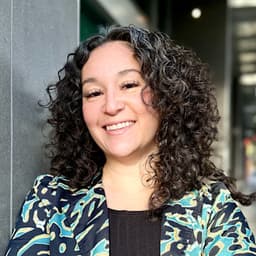Impact stats:
Over 150 state programs and agencies will receive the plan in FY26
13 strategies tied to 6 overall goals contained in the plan
Summary
Nava is partnering with a state government agency to help improve the public’s experience with government digital services. For part of this work, we helped the state develop a strategic plan to improve digital accessibility and equity. The plan outlines goals and strategies to improve the usability and effectiveness of digital services. This work helped the agency meet the requirements set forth by a state executive order, which established governing bodies, roles, and responsibilities for improving accessibility and equity.
Approach
With the agency, we conducted user research and interviews with people living with disabilities to inform strategic recommendations for the plan. We also worked with multiple government stakeholders, offices, and agencies, including those established by the executive order. This taught us about gaps in public services, enabling us to help the agency develop the plan to address those gaps.
Outcomes
The plan includes:
A definition of digital accessibility
The agency’s mission and vision statement
The scope of the plan to improve accessibility
Goals and strategies to improve accessibility
Ways to adapt the plan for small or large government agencies
Government employees across the state can use the plan to ensure a consistent approach to accessibility, increased compliance with accessibility regulations, improved data insights, and more. People in need of public services, particularly those who live with disabilities, can then benefit from improved access to digital services. Ultimately, this will make it easier for people to independently access services, apply for benefits, and interact confidently with the state’s digital systems.
“The Plan is quite comprehensive, clear, concise, and practical, and represents the major steps needed to successfully build, procure, and deploy accessible and equitable digital content.”
- Member of state government
Process
In partnership with the agency, we conducted an assessment of the current state of digital accessibility in the state to understand gaps in access to services. The assessment consisted of user research and interviews with the public and government staff, automated accessibility testing across state agencies, and a comparative analysis of digital accessibility in other states.
We worked closely with the agency and a digital accessibility contractor to execute automated accessibility testing, a comparative analysis, and interviews with government staff. The contractor provided a framework for the research, interviews, and assessment processes, which we adapted for interviewing the public. These interviews focused on peoples’ experiences using the state’s services, websites, and tools. We asked about common challenges people face and how the state might be able to improve accessibility.
In partnership with the agency, we designed everything with accessibility in mind — from recruiting participants to final interviews. For example, the agency included accessibility features such as alternative text on our digital recruitment posts, and we helped identify websites to post on that would reach our target audience. Finally, the state provided American Sign Language interpreters and closed caption vendors for our interviews.
After the agency completed staff and constituent interviews, the accessibility contractor organized the research and we helped review and analyze it. This enabled us to help the agency draft the state’s first plan for improving digital accessibility and equity for digital services.
Our team also helped design a presentation on the plan for the state’s digital accessibility team to share with agency leaders and other members of government.
Conclusion
To improve the public’s experience with digital services, a state government agency tapped Nava to help develop their first plan for improving accessibility and equity for digital services, with a specific focus on improving access for people living with disabilities. We conducted user research and interviews to identify gaps in service delivery and offered actionable, strategic recommendations to improve digital accessibility. Stakeholders across the state will use the plan to ensure public services work better for everyone and meet the public’s unique needs.
Written by

Senior program manager

Senior project manager

Senior content designer and researcher

Editorial associate
